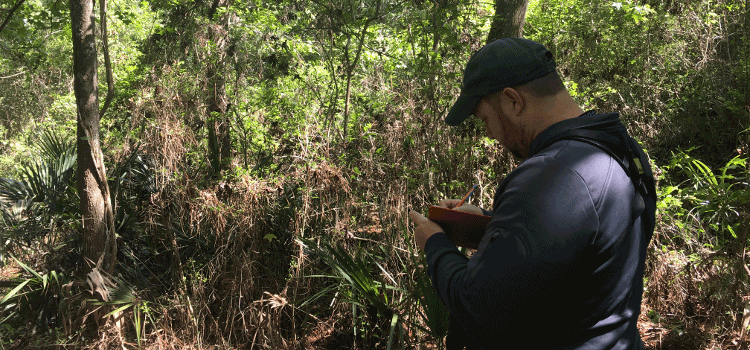Assistant Professor of Biology, Dr. Jason Strickland, published in PNAS
Posted on February 25, 2021 by Jason Strickland

The University of South Alabama recently highlighted Dr. Jason L. Strickland and his contribution to a recent paper published in the Proceedings of the National Academy of Sciences entitled “The Tiger Rattlesnake genome reveals a complex genotype underlying a simple venom phenotype”. The research was led by Dr. Mark Margres who is now at the University of South Florida and was primarily conducted at Clemson University under the direction of Dr. Christopher Parkinson. The Tiger Rattlesnake, Crotalus tigris, has the simplest and most potent venom of any rattlesnake primarily due to the presence of two toxins that, when they interact, are neurotoxic and block the nervous system from sending signals. The researchers found that even though the venom is simple with less than 15 unique toxins, the genome is complex and has ~50 genes from different venom toxin families. Gene loss compared to closely related rattlesnakes is responsible for some of the simplicity, but most of it is due to genetic regulatory mechanisms. Dr. Strickland’s research at South focuses on further understanding how venom can be modified through genetic regulation. Dr. Strickland started in the Biology Department in August of 2020 and currently teaches Genetics and Evolutionary Biology.
-

Fierce Featherweights
Imagine being able to increase your muscle mass by 40% within a few we...
December 26, 2024 -

Passionflower Species Named in Honor of Late Biology Professor
University of South Alabama biology professor Dr. Brian Axsmith discov...
July 2, 2024 -

Public Outreach on the Upper Tensaw River
Joel Borden led a natural history tour of the Upper Tensaw River Nov 6...
November 23, 2021 -

Upcoming bird outreach events featuring Joel Borden
Upcoming bird outreach events featuring Biology faculty member Joel Bo...
October 1, 2021


